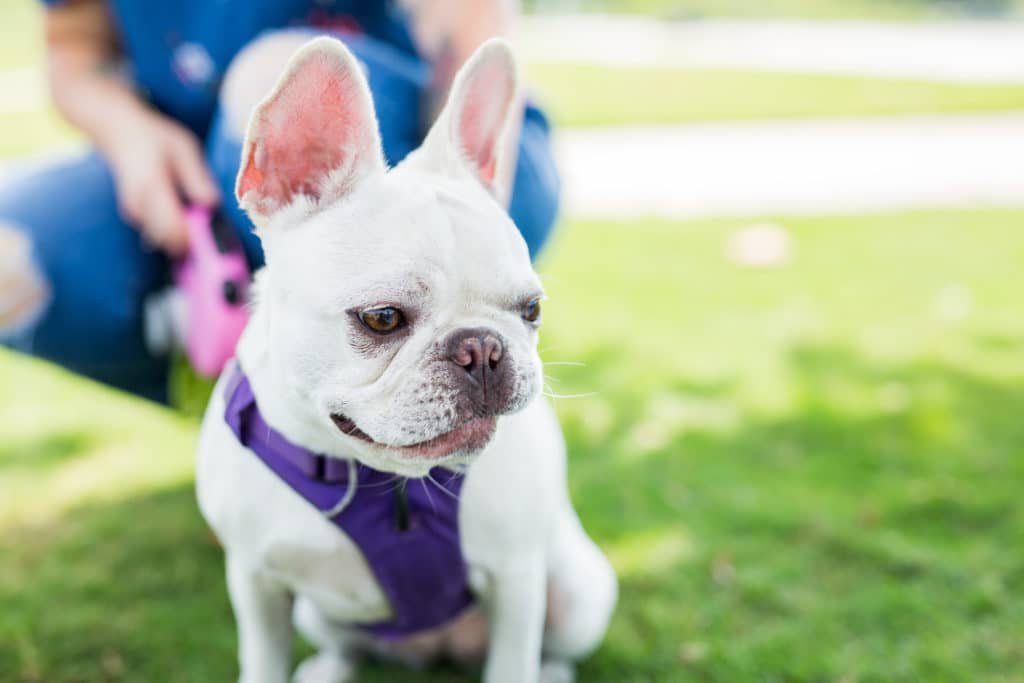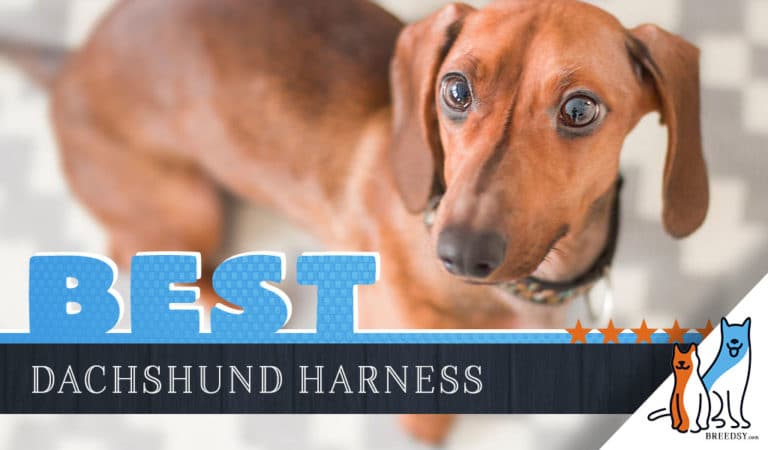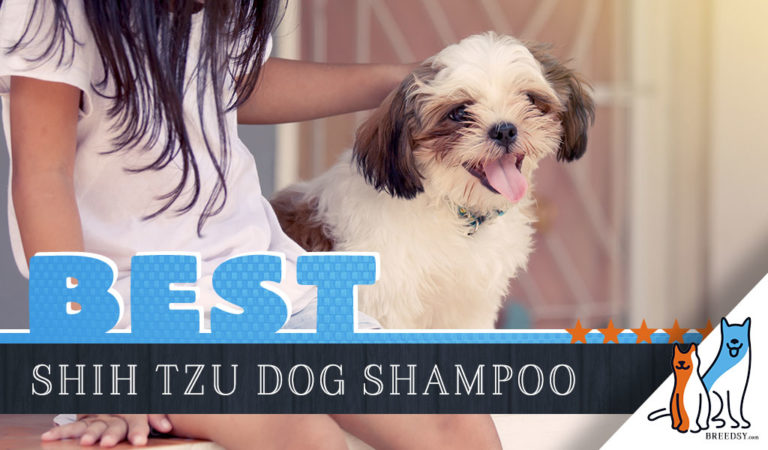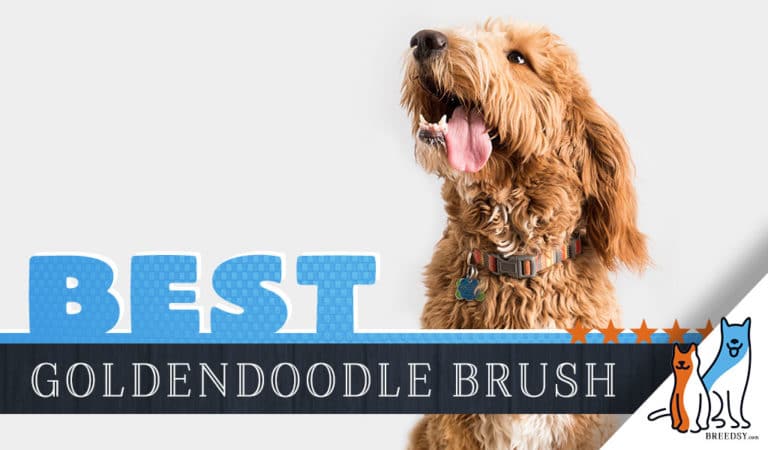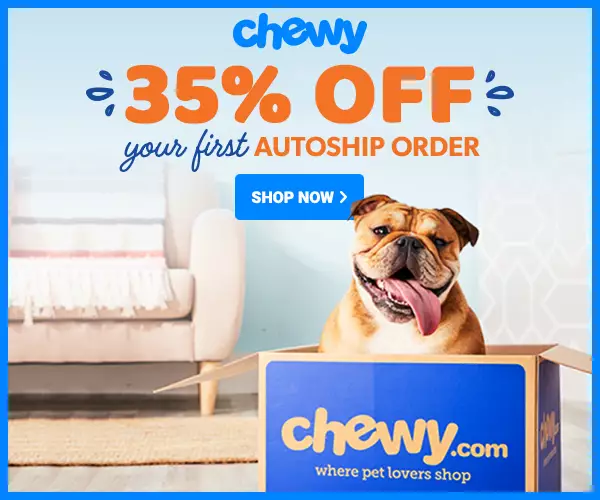6 Best Dog Harnesses for Puppies in 2023

Contents
- What is the Best Puppy Harness?
- What to Look for in a Good Harness for Puppies
- Overall Best Dog Harness for Large Breed Puppies:
- Overall Best Dog Harness for Small Breed Puppies:
- 2 More Highly Rated Dog Harnesses for Large Breed Puppies:
- 3 More Top-Rated Harnesses for Small Breed Puppies:
- Tips for Getting Your Puppy Accustomed to Using a Harness
- Frequently Asked Questions
- Final Thoughts
Many people assume that puppies require more exercise than adult dogs. While this may be true in some cases, the type of exercise that your pup participates in is often more important than the amount. As your puppy’s bones to continue to develop, some exercises—like sprinting or long, tiring walks—can actually do more harm than good.
Another common misconception to watch out for has to deal with collars and leash training. While a collar might be appropriate in certain circumstances, almost all dogs—small breed and large breeds—will the need added support and security of a harness when they’re out and about. Not only can collars sometimes cause injuries when your uncooperative pup pulls or tugs on the lead, but they rarely provide owners with the control they need while leash training.
Regardless of whether or not your furry companion grows into a teacup-sized chihuahua or massive mastiff, finding the best puppy harness can be challenging. Very few brands specify whether their products are appropriate for developing puppies, and not all of them live up to the promises they make. Fortunately, we’ve gone ahead and made the process a little easier by reviewing the top products of 2023 for you:
What is the Best Puppy Harness?
- Pawtitas Padded Pet Training Adjustable Puppy/Dog Harness – Best Large Breed
- FakeFace Heavy-Duty Adjustable Pet Puppy Safety Harness
- ThinkPet Soft Air Mesh No Pull Puppy Harness
- Puppia Vivian A Style Dog Harness – Best Small Breed
- Metric USA No Pull Small Dog Vest Harness
- Red Dingo Classic Dog Harness
Different Types of Dog Harnesses for Puppies
If you try to find a “puppy harness”, your search will likely yield only a few results. Even if they don’t advertise their product for puppies, many brands still design harnesses that work well for younger or developing dogs.
The front-clip harness is almost always used when owners begin leash training their pups. This is because the front clip’s leash attachment on the chest plate provides owners with more control over their dog’s movements. Not only will the location of the clip prevent the leash from tangling, but it often allows you to “steer” your dog in the correct direction too.
For smaller or less energetic breeds, a back-clip harness might be the more suitable option. Unlike the front-clip harness, the back-clip has an attachment on the rear of your dog’s harness. While this location doesn’t provide as much control or prevent tangling, it also doesn’t hinder your dog’s movements either. For well-behaved, relaxed puppies who have already been leash trained, the back-clip harness may be the better option.
Although they’re often overlooked, the car safety harness is just as important as any other—especially for puppies. These harnesses are designed specifically for securing your puppy inside your vehicle (usually by using a seatbelt loop). While this can prevent energetic puppies from distracting you while you’re driving, many states also actually require dogs to wear these harnesses while riding in a car.
Comfort is an important factor to consider for dogs of any age, but for puppies who are unfamiliar with the feel of a harness, keeping your dog cozy is crucial. With extra padding and softer material, many puppies may prefer the added security of a vest harness over other options.
What to Look for in a Good Harness for Puppies
Depending on the breed, the individual needs of your puppy may vary. However, regardless of their size or temperament, there are always a few key features that can separate a good harness from a bad one. Perhaps the most important thing you’ll need when leash training a puppy is a “no-pull” or “anti-choke” feature.
When they first begin using a harness, your puppy’s first instinct will likely be to pull or tug on the leash. With collars, pulling or jerking the lead can cause your dog harm, but the no-pull feature on a harness can prevent an accidental injury by dispersing the force throughout your dog’s body evenly.
Since many puppies enjoy scratching or chewing on anything they get their paws on, scratch-resistant or anti-tear material can significantly extend the life span of your pup’s harness. On outdoor adventures, durable fabric like oxford cloth or nylon can keep the harness from unraveling or falling apart.
Comfort is always a key consideration when trying to identify the best puppy harness. Although they may not always be as durable, vest harnesses that use a soft mesh lining or extra padding can go a long way in making your pup feel secure as you leash train them. Durable fabrics like oxford cloth may have a longer life span, but they may not always feel great against your pup’s skin.
Overall Best Dog Harness for Large Breed Puppies:
Here are our top 3 picks:
| Our 2023 Picks: Large Breed Puppy Harness Recommendations | |||
| Rank | Harness | Price | Rating |
|
#1 |
 |
$$ |
A+
|
|
#2 |
 FakeFace Heavy-Duty Adjustable Pet Puppy Safety Harness with Leash |
$ |
A+
|
|
#3 |
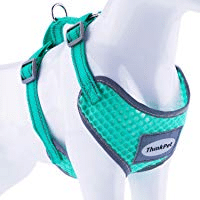 |
$ |
A+
|
Overall Best Dog Harness for Small Breed Puppies:
Here are our top 3 picks:
| Our 2023 Picks: Small Breed Puppy Harness Recommendations | |||
| Rank | Harness | Price | Rating |
|
#1 |
 |
$ |
A+
|
|
#2 |
 |
$ |
A
|
|
#3 |
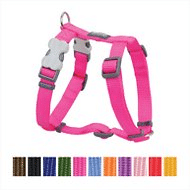 |
$ |
A
|
Pawtitas Padded Pet Training Adjustable Puppy/Dog Harness – Best Overall
There may be a lot of good harnesses out there, but only one claim to be the best—and that’s the Pawtitas Padded Pet Training Adjustable Puppy Harness. While it’s suitable for dogs of any age, the extra padding and adjustable straps make this an ideal choice for puppies (especially large breeds).
Although it provides the comfort and support of a vest harness, the design of this garment makes it function like a step-in harness. If you enjoy taking your pup out on late night walks, the reflective strip ensures that your pup stays visible to both you and others.
For puppies that like to chew, it’s not a good idea to leave the garment with your pup unattended. Placing the harness out of reach can keep both your dog and the harness safe.
2 More Highly Rated Dog Harnesses for Large Breed Puppies:
Although many harnesses aim to be versatile, these particular products stand-out for large breeds:
FakeFace Heavy-Duty Adjustable Pet Puppy Safety Harness with Leash
Although dogs of any size may pull on a harness, this behavior can become a bigger issue with large breed puppies. Fortunately, the Heavy-Duty Adjustable Pet Puppy Safety Harness solves this problem by adding a no-pull feature to their product.
The sturdy handle on the back of the harness also provides an added safety measure: in unexpected situations, you can quickly assist your dog out of trouble.
Not only is this harness made of durable, heavy-duty nylon, but it also contains a breathable mesh layer to prevent excessive sweating and chafing in extreme weather conditions. This may also be the perfect option for escape artists: along with quick-release buckles, the harness includes a lockable buckle to prevent your dog from slipping out.
It’s worth noting that the purchase of this product also comes with a matching leash.
ThinkPet Reflective Soft Air Mesh No Pull Puppy Harness
Puppies that are just beginning to leash train may appreciate the soft, breathable material of the ThinkPet Reflective Soft Air Mesh No Pull Puppy Harness. When submerged in water, the unique texture of the harness stores water between the mesh to help reduce the risk of chafing.
Although buckles can be more convenient, they can also cause skin irritation. The lightweight ThinkPet harness prioritizes your dog’s comfort by using only one buckle and plenty padding instead of several large, irritable buckles.
If you’re worried about taking your pup out at night, there’s no reason to be–the reflective material can keep your furry companion visible in dim or low lighting.
3 More Top-Rated Harnesses for Small Breed Puppies:
The needs of a small breed puppy are often unique–which is why we’ve chosen these particular harnesses for your fun-sized pup:
Puppia Vivian A Style Dog Harness
For miniature breeds like the chihuahua, the fashionable checkered frill pattern of the Vivian A Style Dog harness can ensure your dog is stylish no matter where their outdoor adventures take them.
For extra durability, there’s a nickel-plated D-ring that can withstand the strongest of pulls as well as an easy-to-secure buckle clip to make stepping in and out of the harness uncomplicated.
Many outdoor adventures have a tendency to get messy. If your pup rolls around in a little mud or walks through a few puddles, your harness might need to be cleaned immediately. Unfortunately, not all brands make their harnesses easy to clean after a little rough use.
The good news is that, with its polyester and cotton fabric, the Puppia Vivian harness is effortless to clean. You’ll have your dog back in their fashionable gear in no time.
Metric USA No Pull Small Dog Vest Harness
Some harnesses, as soft as they may be, can weigh your dog down. Fortunately, the Metric USA No Pull Small Dog Vest Harness prevents this by using lightweight materials that weigh less than 2 oz.
If your pup happens to be an escape artist, their disappearing act may be over once you strap them inside this harness. With two reinforced D-rings and an easy-to-secure buckle, escaping from this garment may be nearly impossible. Not to mention, with its comfortable vest design, your small pup can feel both secure and comfortable when they’re out and about.
Keep in mind that, when purchasing the Metric USA harness, it’s important to use the brand’s individual sizing chart and compare it to your dog’s individual measurements when trying to find the right size (rather than rely on the typical size for the breed).
Red Dingo Classic Dog Harness
For a bright, high-visible harness that keeps your dog secure without any frills, the Red Dingo Classic Dog Harness may be just what you need. This simple harness uses durable nylon and sewn seams to make sure it can withstand all your pup’s outdoor adventures. The heavy-duty material is also designed to be scratch-resistant so that it can survive a little wear and tear.
You also won’t need a collar with this garment since the Red Dingo harness also comes with a place to put your dog’s ID tag. As if that’s not enough, the buckle bone clip can help you easily snap your dog in and out of the harness whenever you need to. Not only is the buckle bone trademarked, but it also remains one of the strongest side-release buckles in the country.
Since hand-washing your harness can be a chore (especially if your dog enjoys getting a little dirty), the Red Dingo Classic Dog Harness is machine-washable, but will likely need to air-dry before your dog wears it again.
Tips for Getting Your Puppy Accustomed to Using a Harness
Anytime you’re trying to introduce a puppy to something new, their first reaction isn’t usually positive. However, while it may take a little extra work to harness train your puppy, the advantages of using a harness make it worthwhile. Here are a few tips to keep in mind:
- Let your puppy make the first introductions. Instead of immediately trying to wrangle an anxious puppy into the harness, a better option is to let your pup sniff it themselves. While they’re laying down, gently place the harness near them and let your dog interact with it.
- Don’t forget to use a little positive reinforcement. Every time your puppy sniffs the harness or lets you put it on them, don’t forget to reward your pup with their favorite treat. This will teach your dog that, not only is the harness not a threat, but it’s actually a good thing too.
- Desensitize your puppy to the harness by letting them wear it around the house. Since your puppy might be uncooperative the first few times they wear the harness, it’s a good idea to let them adjust to it while they’re in a safe and comfortable space.
- Make positive memories outside the home too. Try making the first place you take your puppy in their new harness a memorable one. Once your puppy begins to associate the harness with their favorite spots, they might not ever want to take it off. By making the first few trips outside particularly memorable, your pup may begin to view the harness as a good thing.
- Patience can the process easier. Although harness training can be time-consuming, it can be especially difficult if you’re already leash training your puppy. Don’t get discouraged if your pup doesn’t adjust within a couple of hours—it may take them a few days to truly cooperate with the harness.
Frequently Asked Questions
- How do I fit my puppy for a harness? – You’ll want to take your puppy’s current measurements, but to keep your dog from immediately growing out of the product, you’ll want to ensure that the harness you purchase can be adjusted to a bigger size. Keep in mind that, with large breeds, you may eventually have to buy a larger size.
- How can I tell if the harness is too loose or too tight on my puppy? – A comfortable harness is one that you can slip two fingers underneath of. If you can easily slip more than two fingers, it’s likely that the garment is too loose, but if you aren’t able to slip even two, it’s too tight.
- How do I know if the harness is comfortable? – You might never know whether or not the harness is completely comfortable, but there are a few warning signs you can watch out for. If a harness leaves evidence of skin irritation or chafing behind, it’s likely that you need to adjust the size or switch to a different brand. Another quick way to tell is by actually feeling the material. If it feels extremely rough to the touch, it probably doesn’t feel great against your dog’s skin.
- What is the best kind of harness for a puppy? – All breeds are different, but in many cases, you’ll want to start your pup off with a front-clip harness that prevents pulling. This will help your dog understand who’s “in charge” while also keeping them safe from potential injuries or harm.
- How can I tell if my puppy has outgrown the harness? – Once you’ve adjusted the harness to its largest setting and you can no longer fit two fingers underneath, it’s time to move up a size.
Final Thoughts
Puppies often have different needs than adult dogs do. Instead of waiting till they reach maturity to introduce harness training, starting in puppyhood can save you a lot of time and energy. If you aren’t sure what the best puppy harness may be for your dog, feel free to try one of the top-rated products we’ve reviewed above.

